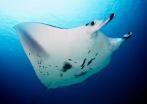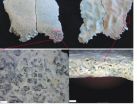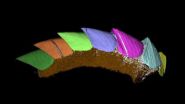(Press-News.org) KANSAS CITY, Mo. – OCTOBER 3, 2012 – Today investigators at Children's Mercy Hospitals and Clinics in Kansas City reported the first use of whole genome information for diagnosing critically ill infants. As reported in Science Translational Medicine, the team describes STAT-Seq, a whole genome sequencing approach - from blood sample to returning results to a physician - in about 50 hours. Currently, testing even a single gene takes six weeks or more.
Speed of diagnosis is most critical in acute care situations, as in a neonatal intensive care unit (NICU), where medical decision-making is made in hours not weeks. Using STAT-Seq, with consent from parents, the investigators diagnosed acutely ill infants from the hospital's NICU. By casting a broad net over the entire set of about 3,500 genetic diseases, STAT-Seq demonstrates for the first time the potential for genome sequencing to influence therapeutic decisions in the immediate needs of NICU patients.
"Up to one third of babies admitted to a NICU in the U.S. have genetic diseases," said Stephen Kingsmore, M.B. Ch.B., D.Sc., FRCPath, Director of the Center for Pediatric Genomic Medicine at Children's Mercy. "By obtaining an interpreted genome in about two days, physicians can make practical use of diagnostic results to tailor treatments to individual infants and children."
Genetic diseases affect about three percent of children and account for 15 percent of childhood hospitalizations. Treatments are currently available for more than 500 genetic diseases. In about 70 of these, such as infantile Pompe disease and Krabbe disease, initiation of therapy in newborns can help prevent disabilities and life-threatening illnesses.
STAT-Seq uses software that translates physician-entered clinical features in individual patients into a comprehensive set of relevant diseases. Developed at Children's Mercy, this software substantially automates identification of the DNA variations that can explain the child's condition. The team uses Illumina's HiSeq 2500 system, which sequences an entire genome at high coverage in about 25 hours.
Although further research is needed, STAT-Seq also has the potential to offer cost-saving benefits. "By shortening the time-to-diagnosis, we may markedly reduce the number of other tests performed and reduce delays to a diagnosis," said Kingsmore. "Reaching an accurate diagnosis quickly can help to shorten hospitalization and reduce costs and stress for families."
###
About Children's Mercy Hospitals and Clinics
Children's Mercy Hospitals and Clinics, located in Kansas City, Mo., is one of the nation's top pediatric medical centers. The 333-bed hospital provides care for children from birth through the age of 21, and has been ranked by U.S. News & World Report as one of "America's Best Children's Hospitals" and recognized by the American Nurses Credentialing Center with Magnet designation for excellence in nursing services. Its faculty of 600 pediatricians and researchers across more than 40 subspecialties are actively involved in clinical care, pediatric research, and educating the next generation of pediatric subspecialists. For more information about Children's Mercy and its research, visit childrensmercy.org or download our mobile phone app CMH4YOU for all phone types. For breaking news and videos, follow us on Twitter, YouTube and Facebook.
About The Center for Pediatric Genomic Medicine at Children's Mercy Hospital
The first of its kind in a pediatric setting, The Center for Pediatric Genomic Medicine combines genome, computational and analytical capabilities to bring new diagnostic and treatment options to children with genetic diseases. For more information about STAT-Seq, diagnostic tests and current research, visit www.pediatricgenomicmedicine.com.
50-hour whole genome sequencing provides rapid diagnosis for children with genetic disorders
Test speed may reduce infant morbidity and mortality, study by Children's Mercy researchers published in Science Translational Medicine
2012-10-04
ELSE PRESS RELEASES FROM THIS DATE:
Key environmental factors influencing manta ray behavior identified
2012-10-04
Manta rays are more likely to gather together under either a new or a full moon, according to new research published Oct 3 in the open access journal PLOS ONE by Fabrice Jaine and colleagues at the University of Queensland.
The research identifies environmental factors that predict the abundance and behavior of manta rays at Lady Elliott Island in the Great Barrier Reef. The authors comment that knowing these factors is important for conservation efforts, "especially in the context of a changing climate and with targeted fisheries increasingly threatening manta ray populations ...
Oldest evidence of regular meat consumption by early humans found
2012-10-04
A fragment of a child's skull discovered at Olduvai Gorge, Tanzania shows the oldest known evidence of anemia caused by a nutritional deficiency, reports a new paper published Oct. 3 in the open access journal PLOS ONE.
The discovery, made by a global team of researchers led by Manuel Domínguez-Rodrigo from Complutense University, Madrid, suggests that early human ancestors began eating meat much earlier in history than previously believed. The skull fragment identified is thought to belong to a child somewhat younger than two and shows bone lesions that commonly result ...
Novel blood-based protein signature determined for rare, aggressive lung cancer
2012-10-04
Researchers have discovered a panel of 13 blood proteins that may be effective biomarkers to detect malignant mesothelioma, according to a study published Oct. 3 in the open access journal PLOS ONE by Rachel Ostroff from the company SomaLogic, which developed the new test, and colleagues at other institutions.
Malignant mesothelioma is a rare, aggressive form of lung cancer that can develop after prolonged exposure to asbestos. Because early diagnosis is difficult, most patients face a poor prognosis and have few options for treatment. In the study, authors compared proteins ...
Less is more when choosing between groups of assorted items
2012-10-04
When making decisions about the value of an assortment of different objects, people approximate an average overall value, which though frequently useful can lead to apparently irrational decision-making. A new study published Oct 3 in PLOS ONE by Jerald Kralik and colleagues at Dartmouth College shows for the first time that non-human primates also make similar 'irrational' choices based on approximation.
In the study, researchers found that rhesus monkeys preferred a highly-valued food item (a fruit) alone to the identical item paired with a food of positive but lower ...
Mollusc missing link revealed in 3-D
2012-10-04
Scientists have discovered a rare fossil called Kulindroplax, the missing link between two mollusc groups, which is revealed in a 3D computer model, in research published today in the journal Nature.
The researchers have unearthed the worm-like partly shelled Kulindroplax, which they have modelled in a 3D computer animation. Kulindroplax lived in the sea during the Silurian Period, approximately 425 million years ago, when most life lived in the oceans and the first plants were beginning to grow on land. The team found the Kulindroplax fossil, the only one of its kind ...
Blocking tumor-induced inflammation impacts cancer development
2012-10-04
Researchers at the University of California, San Diego School of Medicine report the discovery of microbial–dependent mechanisms through which some cancers mount an inflammatory response that fuels their development and growth.
The findings are published in the October 3, 2012 Advanced Online Edition of Nature.
The association between chronic inflammation and tumor development has long been known from the early work of German pathologist Rudolph Virchow. Harvard University pathologist Harold Dvorak later compared tumors with "wounds that never heal," noting the similarities ...
Healthcare professionals as bad as patients at good respiratory inhaler technique
2012-10-04
Healthcare professionals are as bad as patients when it comes to knowing how to use inhalers prescribed for asthma and other respiratory conditions correctly, says an editorial in Drug and Therapeutics Bulletin (DTB).
They therefore can't be relied on to teach patients how to use these devices correctly, says DTB.
But as 45 million prescriptions for respiratory inhalers were dispensed in 2011 in England alone—at a cost of £900 million to the NHS—everyone needs to be more clued up on correct inhaler technique to make sure these drugs work well for patients and offer ...
Aspirin may temper brain power decline in elderly women at risk of heart disease
2012-10-04
Daily low dose aspirin could slow the decline in brain power among elderly women at high risk of heart disease, indicates observational research published in the online journal BMJ Open.
The researchers base their findings on 681 women between the ages of 70 and 92, 601 of whom were at high risk of heart disease and stroke, defined as a 10% or greater risk on a validated risk scale (Framingham).
All the women were subjected to a battery of tests to measure their physical health and intellectual capacity, including verbal fluency and memory speed, and dementia (mini ...
Ancient mollusk tells a contrary story
2012-10-04
New Haven, Conn. — A fossil unearthed in Great Britain may end a long-running debate about the mollusks, one of life's most diverse invertebrate groups: Which evolved first, shelled forms like clams and snails, or their shell-less, worm-like relatives?
The small new fossil, found in marine rocks along the English-Welsh border, provides the best fossil evidence yet that the simpler worm-like mollusks evolved from their more anatomically complex shelled brethren, rather than the other way around.
The discovery reinforces previous findings from molecular sequencing studies ...
Southern Hemisphere becoming drier
2012-10-04
A decline in April-May rainfall over south-east Australia is associated with a southward expansion of the subtropical dry-zone according to research published today in Scientific Reports, a primary research journal from the publishers of Nature.
CSIRO scientists Wenju Cai, Tim Cowan and Marcus Thatcher explored why autumn rainfall has been in decline across south-eastern Australia since the 1970s, a period that included the devastating Millennium drought from 1997-2009.
Previous research into what has been driving the decline in autumn rainfall across regions like southern ...
LAST 30 PRESS RELEASES:
Making lighter work of calculating fluid and heat flow
Normalizing blood sugar can halve heart attack risk
Lowering blood sugar cuts heart attack risk in people with prediabetes
Study links genetic variants to risk of blinding eye disease in premature infants
Non-opioid ‘pain sponge’ therapy halts cartilage degeneration and relieves chronic pain
AI can pick up cultural values by mimicking how kids learn
China’s ecological redlines offer fast track to 30 x 30 global conservation goal
Invisible indoor threats: emerging household contaminants and their growing risks to human health
Adding antibody treatment to chemo boosts outcomes for children with rare cancer
Germline pathogenic variants among women without a history of breast cancer
Tanning beds triple melanoma risk, potentially causing broad DNA damage
Unique bond identified as key to viral infection speed
Indoor tanning makes youthful skin much older on a genetic level
Mouse model sheds new light on the causes and potential solutions to human GI problems linked to muscular dystrophy
The Journal of Nuclear Medicine ahead-of-print tip sheet: December 12, 2025
Smarter tools for peering into the microscopic world
Applications open for funding to conduct research in the Kinsey Institute archives
Global measure underestimates the severity of food insecurity
Child survivors of critical illness are missing out on timely follow up care
Risk-based vs annual breast cancer screening / the WISDOM randomized clinical trial
University of Toronto launches Electric Vehicle Innovation Ontario to accelerate advanced EV technologies and build Canada’s innovation advantage
Early relapse predicts poor outcomes in aggressive blood cancer
American College of Lifestyle Medicine applauds two CMS models aligned with lifestyle medicine practice and reimbursement
Clinical trial finds cannabis use not a barrier to quitting nicotine vaping
Supplemental nutrition assistance program policies and food insecurity
Switching immune cells to “night mode” could limit damage after a heart attack, study suggests
URI-based Global RIghts Project report spotlights continued troubling trends in worldwide inhumane treatment
Neutrophils are less aggressive at night, explaining why nighttime heart attacks cause less damage than daytime events
Menopausal hormone therapy may not pose breast cancer risk for women with BRCA mutations
Mobile health tool may improve quality of life for adolescent and young adult breast cancer survivors
[Press-News.org] 50-hour whole genome sequencing provides rapid diagnosis for children with genetic disordersTest speed may reduce infant morbidity and mortality, study by Children's Mercy researchers published in Science Translational Medicine




